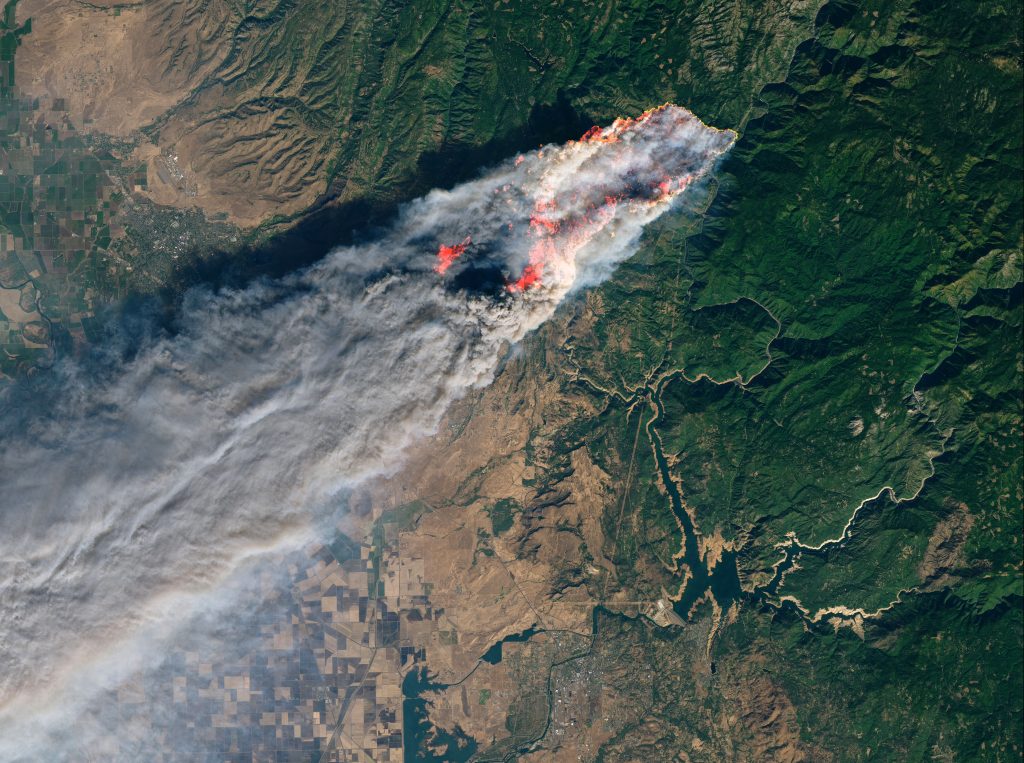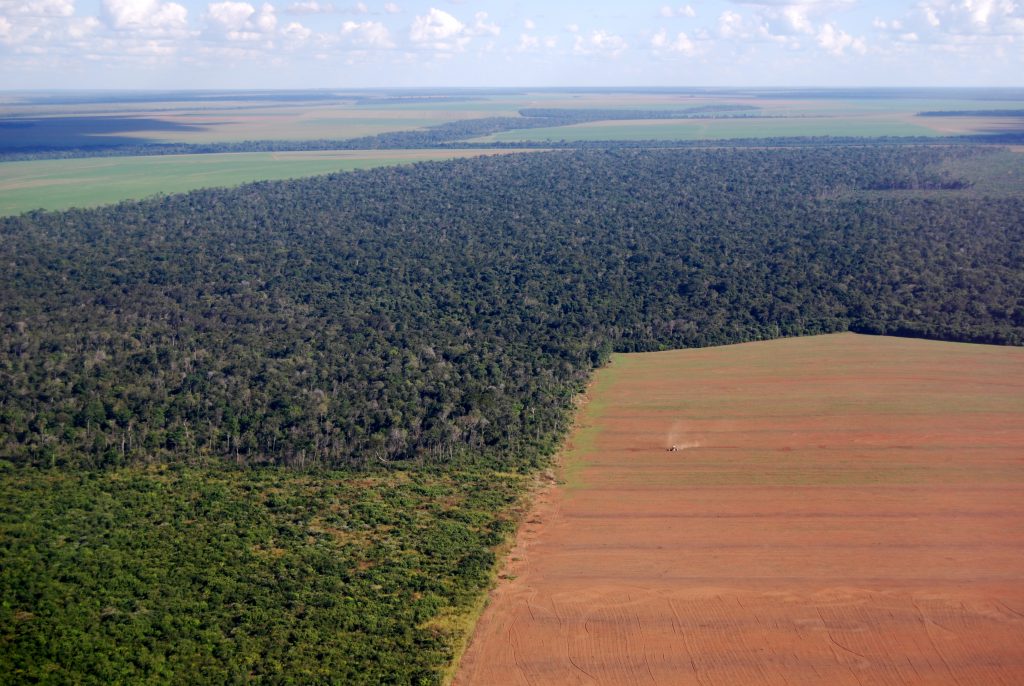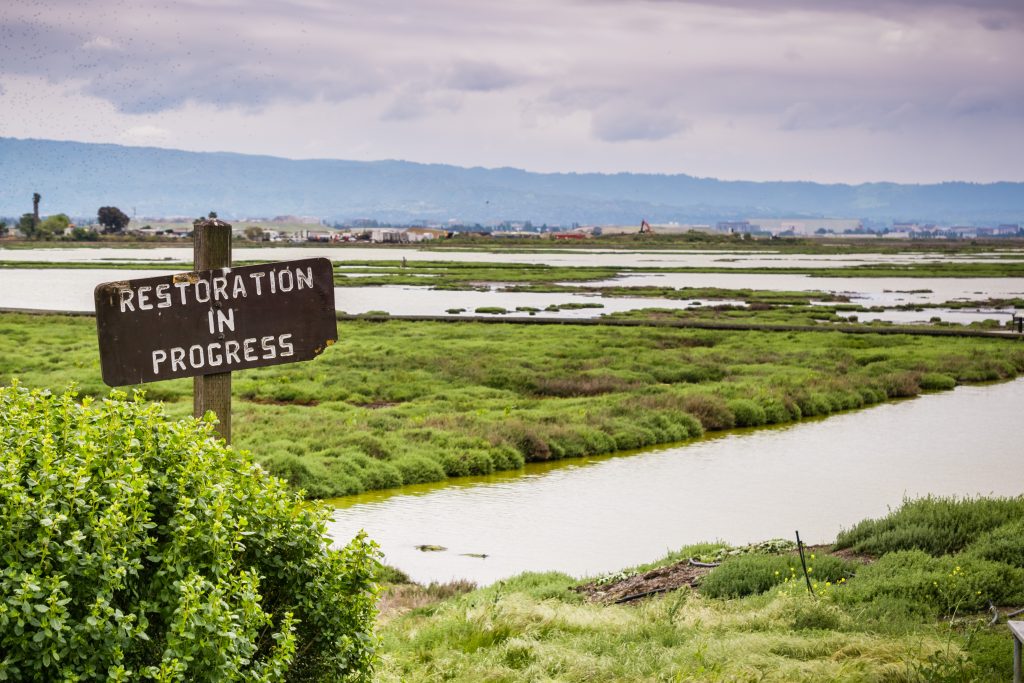In the next decade, the world will probably see the biggest ecological restoration effort in history. We have seen a recent wave of major commitments to large-scale landscape restoration. In pursuit of natural climate solutions and the Sustainable Development Goals, nearly $1.5 billion was pledged by donors in the fall of 2018 in the wake of the Global Climate Action Summit. In March, the United Nations General Assembly declared the 2021-2030 period the UN Decade on Ecological Restoration. Those pledges join the Bonn Challenge, New York Declaration on Forests, AFR100, and numerous other public and private commitments that together represent more than 700 million hectares of land.
 What is still missing are the underpinnings of a financial strategy: How do we finance and execute restoration and sustainable land use at the necessary scale? How do we coordinate actions across many nations, sectors, and value chains to ensure that we’re meeting our goals?
What is still missing are the underpinnings of a financial strategy: How do we finance and execute restoration and sustainable land use at the necessary scale? How do we coordinate actions across many nations, sectors, and value chains to ensure that we’re meeting our goals?
The environmental markets and conservation investments field, though young, offers many promising models. But the field flies under the radar of many decision-makers. In the United States, for instance, the ecological restoration industry is a $25 billion-a-year sector that supports more jobs than logging, coal mining, or iron and steel. Yet the average policy-maker or investor has never heard of it.
A key goal of the Environmental Markets and Finance Summit, hosted by Forest Trends and AEMI, was to begin mapping out what a coordinated financial strategy could look like, in order to scale up global restoration and sustainable land use dramatically. Environmental markets (the most prominent of which focus on carbon offsets, wetland and habitat credits, sustainably certified products, and water quality offsets and trading) have matured mostly in silos. It is time to start putting the pieces together and cross-pollinating solutions.
The Summit brought together a broad and unusual coalition of experts from the fields of impact investment, forestry, carbon and energy markets, ecological restoration, corporate sustainability, climate policy, philanthropy, and water resources management. Our goal was to identify practical ways to coordinate – and accelerate – new investments at a scale appropriate to the challenge.
Insights at a glance:
- We are fundamentally mispricing risks related to natural assets. We need new market signals and a set of instruments that put the power of the insurance industry, mainstream investment, and impact investors behind finance for restoration and resilience.
- There is tremendous ambition among subnational, business, and nongovernmental actors to take action on climate, deforestation, and ecological degradation. We can accelerate investments in the land use sector by supporting these leaders with data and practical implementation tools.
- We are in the early days of doing incredible things with environmental data. In the next two years, let’s create a strategic roadmap.
- The future is in “mosaic” projects – but they need to share scaffolding. Let’s move faster to build the accounting systems that can underpin investments in natural infrastructure at scale.
- All of the above require us to build unusual coalitions to drive new investment. Since strong partnerships don’t happen overnight, we need to start now.
1. We are fundamentally mispricing risks related to natural assets. We need new market signals and a set of instruments that put the power of the insurance industry, mainstream investment, and impact investors behind finance for restoration and resilience.
We’ve been building environmental markets and finance for more than twenty years propelled by the idea that we’ve failed to assign appropriate economic value to natural capital.

But an understanding of how to properly price risks related to climate change and environmental degradation is still missing. The result is underinvestment in the solutions that help us manage these risks, and continued coverage activities that should no longer be insurable in the era of climate change.
We are in early stages of the insurance industry, shareholders, and other investors beginning to grapple with this blind spot. We need to move faster. For the restoration industry and investors, there is business opportunity in having a more sophisticated understanding of values and risks than others. For natural asset managers (especially those in search of patient capital), quantifying and pricing risk can underpin new finance for natural infrastructure restoration and protection in the form of insurance and other risk management instruments.
Early examples like the Quintana Roo coral reef insurance policy are promising: here, Swiss Re was able to assess risk of hurricane damage to reefs and beaches on Mexico’s coastline and issue a parametric insurance policy that will provide a payout to repair damaged reefs post-storm. Innovative financial instruments can also help us before disaster strikes. Since an ounce of prevention is worth a pound of cure, we should be rushing to identify and fund nature-based risk mitigation opportunities like coastal wetlands restoration.
A key next step is to continue to scope and demonstrate the next generation of finance and insurance instruments to drive investments in nature-based responses to climate risk.
2. There is tremendous ambition among subnational, business, and nongovernmental actors to take action on climate, deforestation, and ecological degradation. We can accelerate investments in the land use sector by supporting these leaders with data and practical implementation tools.
As the Trump administration officially pulls out of the Paris agreement and Brazil’s President Jair Bolsonaro shrugs off pressure from the global community to protect the Amazon, subnational and quasi-governmental initiatives are taking up the charge.
In tropical forest countries, subnational jurisdictions are making their own commitments to low-emissions development, whether or not their national governments are on board. A recent report from America’s Pledge shows how leadership by cities, states, and business may put the US within striking distance of its Paris commitment.
At the Summit, leading companies told us how they’re beginning to think about sustainability as just the price of doing business, rather than a premium product offering. Speakers from Danone, the Kering Group, Ceres, and Forest Trends’ Supply Change all reinforced that concerns about social license to operate, investor pressure, and (in some cases) expectation of future regulation are forcing companies to deeply grapple with risks related to climate change and deforestation, particularly in their supply chains. Forest Trends has shown that commercial agriculture is responsible for over 70 percent of forest destruction in tropical and sub-tropical countries. If companies follow through on their ambitions of supply chains with no net impact on forests, we’re talking about an absolute transformation in the way that everyday consumer goods products are produced.

But subnational and corporate leaders will need help to meet their ambitious goals.
A first step is better transparency. In the next two years, we need to put in place frameworks to map subnational and private-sector commitments and quantify their proposed – and actual – impacts. That will ensure accountability and more accurate tracking of contributions toward overall climate goals.
Experts in environmental markets and finance can also help companies and jurisdictions with practical implementation. The field has decades of experience in performance-based program and metric design that can help companies fully integrate climate and ecosystem mitigation into their supply chains. Many companies are already looking to third-party certifications, offsets, and other “off the shelf” products that can help them meet their commitments in the interim period as they transition their supply chains toward zero or zero-net deforestation. We need to connect these dots much faster.
3. We are in the early days of doing incredible things with environmental data. In the next two years, let’s create a strategic roadmap for harnessing data and technology to unlock new investment.
Summit speakers told us how technological advances are improving project planning, monitoring, and verification. We heard how technology can help us produce more food, fuel, and building materials on less land.
On the other side, we heard from the insurance industry, debt/equity finance, and corporate clients that data is really important when it comes to signing on to a restoration or sustainable land-use project.
In the past, quantifying project performance has carried with it very high transaction costs, which has kept private capital away. Technology is helping to bring those costs down. There are enormous opportunities in the coming years for better environmental data and tech to help support new investment cases and bring down transaction costs of existing investment models.
In the next 24 months, let’s think strategically about how we can better align emerging technology with restoration and sustainable land-use priorities. This means understanding what private investors need to get involved in projects, and also communicating with the tech sector about how they can do more to support land use investments.
4. The future is in “mosaic” projects – but they need to share scaffolding. Let’s move faster to build the accounting systems that can underpin investments in natural infrastructure at scale.
No one is waiting for a Kyoto-style single global carbon market. Over and over, asset managers and market service providers told us that they’re designing projects that can responsively serve multiple markets, depending on where the demand is. This allows them to stack funding from multiple sources: carbon offsets, sustainable forestry, water quality credits, recreational use payments, wetland and habitat mitigation, and other revenue streams.
This means they are trying to manage lands in such a way to optimize multiple benefits (a great thing!). It also means that they are increasingly able to move fluently between multiple metrics, whether the buyer is compliance-driven or acting voluntarily, and no matter

what outcomes they’re looking for.
From a metrics perspective, this means that policy-makers and regulators need to better understand this need for flexibility. The US Water Alliance’s “One Water” concept is an excellent example of promoting integrated water solutions (water quality, water quantity and flood reduction) and breaking down regulatory silos.
Standards bodies, registries, and other market infrastructure providers, as well as the tech sector, should also be thinking about how to ensure transparency and reasonable consistency – or at least comparability – in how outcomes are measured and tracked. A “global bazaar” with many different market spaces offers a lot of room for innovation and bottom-up responsiveness to buyer/seller needs. But it also is more vulnerable to problems of double-counting, loss of credibility, and murkiness around actual environmental outcomes.
Takeaway: we need really good accounting methodologies and systems that can handle this diversity of projects, and “nest” projects and jurisdictional efforts into a global framework.
As subnational and private sector actors get ready to make billion-dollar direct investments (in particular, the energy sector and the aviation industry) outside of national climate action plans, this need is becoming more urgent every day. Building out the metrics and accounting systems is part business opportunity, part public good, and as such needs support by both the private sector and public/philanthropic/multilateral funding.
5. All of the above require us to build unusual coalitions to drive new investment. Since strong partnerships don’t happen overnight, we need to start now.
Thanks to work by groups like Nature4Climate and Project Drawdown, we have a pretty good idea of priorities in the land-use sector for climate investments.
Scaling up the necessary finance for those land-use solutions requires far more coordination between public, private, and philanthropic investors, and that requires working relationships beyond seeing each other every few years at an event like the Summit.
A key theme of the Summit was the need to build more diversity in the teams working on restoration and sustainable land-use. How can the conservation field and their public/philanthropic funders involve private capital, business, and tech more closely in projects from day one? What are the right roles and right sequencing in stacking capital for conservation investments? How can we do a better job helping to fill any gaps in knowledge and capacity among our partners?
At the Summit, we saw some chances to move quickly on solving problems. Let’s commit to using those opportunities as a springboard – and to find ways to get a group like this gathering again to keep building out the blueprint for scaling investments in nature.
Viewpoints showcases expert analysis and commentary from the Forest Trends team.
Connect with us on Facebook and Twitter to follow our latest work.
